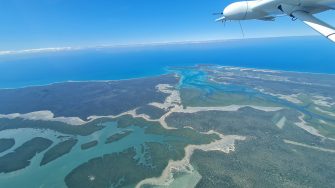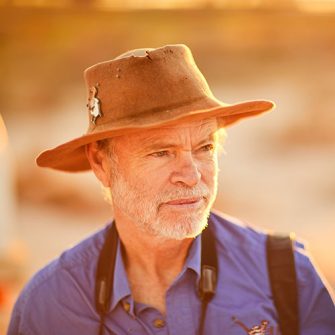
Date: Tuesday October 4th 2022
Project: Eastern Australian Waterbird Survey
Observers: Richard Kingsford & Paul Wainwright
Pilot: Tim Dugan
We were in the air by about 8am on our 40th year of survey. There has been talk of t-shirts! The weather was great for flying – sunny and no wind. Later in the week doesn’t look great, given the big front coming through central Australia.
Today we worked our way up the east coast, up to the Whitsundays, surveying the latidudinal survey bands east of the Great Dividing Range, from Band 4 in the south to Bands 9 and 10 in the north (each one of these survey bands is thirty kilometres wide).
First wetlands to be surveyed were the Myall Lakes, working south to north along the eastern edge of the lakes. They were all full as usual with not many birds, as in previous years. This is not a great surprise, given how wet it is in the inland. Today – only a few flocks of swans and pied and great cormorants. Probably no more than a hundred birds in total.
Myall Lakes
Surveying Myall Lakes
Smiths Lake, just north of Myall Lakes
From here, it was another 200 kilometres up to survey Band 5, on the Bellinger River and then on to Band 6 just north of Byron Bay. Neither bands have many wetlands in their eastern sections and both have very few waterbirds. The same every year.
Air traffic was busy around Brisbane so instead of flying over Stradbroke Island and to the east of the airport we went around the west. It was a bit quicker but busy.
Flying over Brisbane River and CBD.
Intricate sand formations on the estuary north of Brisbane.
After stopping in Maroochydore for lunch, we then surveyed Lake Weyba and a few dams around Maroochydore on Band 7. Not much action on the waterbird front – just a few swans and pelicans and the odd cormorant.
Surveying Lake Weyba.
Then up to fly over Hervey Bay and Fraser Island.
Baffle Creek on Band 8, north of Bundaberg, had quite a few more dams and has more aquaculture underway each year. There were few waterbirds on any of the wetlands, more of the inland wetland influence on coastal wetlands.
Surveying around Baffle Creek north of Bundaberg.
Then on up the coast over Gladstone with its line-up of coal and gas ships.
Coal and gas ships off Gladstone.
Intricate and beautiful patterns from small creeks and estuaries north of Gladstone.
The excitement for us waterbird counters was on Band 8, north of Rockhampton, around the Styx River. It was great to see hundreds of waterbirds on the freshwater wetlands. Probably up to a few thousand. Many of these were black duck. It is always a bit odd that this is a hot spot for black duck but it always seems to be that way.
Styx River wetland and floodplain.
There were also hundreds of magpie geese, hundreds of plumed whistling-ducks, and it's always great to see a few white pygmy-geese.
Surveying the Styx River floodplain.
We finished up in Mackay for the night, leaving us all of Band 10 to do the next day.

